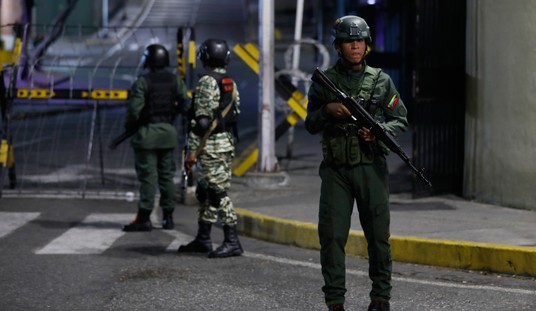The end of summer makes melancholy babies of all of us. We're more nervous than usual this year. There's the muted anxiety for the young, shifting gears for back to school, and simply putting away the summer clothes reminds us all of the fleeting freedom of life in the sunshine.
But this year the whole world seems on edge. There's the chatter from the Middle East, which at last seems to bother President Obama. Beheadings of Americans will do that. We've all felt the deaths of James Foley and Steven Sotloff as personal loss and grief. Children were alarmed and grown-ups angered. Terrorism took on a human face, even if the executioner, hiding behind a hood, didn't.
The president hardly calmed anyone with his happy talk and the admission that he has no strategy against the Islamic State, or ISIS. Even if true, and there's no doubting it, why did he have to send that reassurance to Iraq and Syria?
The newspapers are full of news of another centenary, the hundredth anniversary of the extinction of the passenger pigeon. The bird captured more sympathy on its funereal anniversary than it ever did in life, and hit a nerve, a tangible emotional distraction from the rest of the bad news.
How could the most prolific bird in North America disappear completely? The passenger -- derived from a corruption of the French "passager," meaning "passing by" -- was once the most abundant bird on the continent. One flock in Southern Ontario was described as a mile wide and 300 miles long. We're not a cruel people. The demise of a whole species upsets us. How we treat animals tells us something about ourselves.
Recommended
How it happened is a remarkable story, complicated and unfathomable in the present day, much more than "the largest-scale human-caused extinction in history," as the New York Times describes it. It's about more than an environmental "cri de coeur" though it's a cry from the heart, sure enough.
Many passenger pigeons were killed for food during brutal winters on the frontier. That's easily understood. Others were hunted and sold, as pigeon pie became popular. The birds were massacred in the hundreds of millions with clubs and guns, even cannon. They were plentiful, so why not? Once thought to be a relative of the dove, they were tasty, too. They were torched in their habitat, death in flight and death in their nests. After the telegraph exposed them, special trains carried hunters hundreds of miles to nesting colonies, and their days were numbered. Billions were slaughtered, their forests destroyed. (The original "stool pigeon" was a tame bird tethered to a stool with grains to trap wild ones.) In a book describing their "flight to extinction," Joel Greenberg describes the demise as a triumph of the human ingenuity for killing. The last surviving bird, named Martha, died in the Cincinnati Zoo in 1914, and in her last days she still got no respect. Spectators threw sand at her, aware she was the last of her kind.
Some of the most famous environmental protectionists played less than a heroic role in the story of the birds' disappearance. Members of the Boone and Crockett Club, founded by Theodore Roosevelt and George Bird Grinnell, were trophy hunters as well as conservationists. "They wanted vast protected forests because they wanted a vast supply of creatures to kill," writes James Rosen in the New Yorker.
In making the extinction of the passenger pigeon the "teaching moment" that environmentalists seek, they uncover a checkered history of the conservationists. Madison Grant, a member of the Boone and Crockett Club who helped save the bison and who built the New York Zoological Society, was nevertheless a "biological racist" who cared more for birds and bison than Jews, Asians and Eastern Europeans, whom he helped persuade Congress to keep out of the country.
This inevitably colors the mixed messages of environmental activists of the past, and reminds of the ways moral and ethical issues can be shaped and manipulated. At best, modern conservationists will save certain dying breeds. At worst, they simplify the problem on behalf of pet projects. Revive & Restore is a foundation that wants to bring back the passenger pigeon through a controversial process called "de-extinction," using DNA of its close relatives. Tampering with the nature of nature can be risky.
The Smithsonian Gardens displays "The Lost Bird Project" in Washington with large beautiful sculptures of extinct North American birds. This exhibition coincides with one at the Natural History museum, featuring Martha, that last passenger pigeon, whose carcass was skinned and stuffed for display. The ornithologist, who dissected Martha, was a notorious racist when he considered the human species, but he kept the bird's heart intact for sentimental reasons.

























Join the conversation as a VIP Member